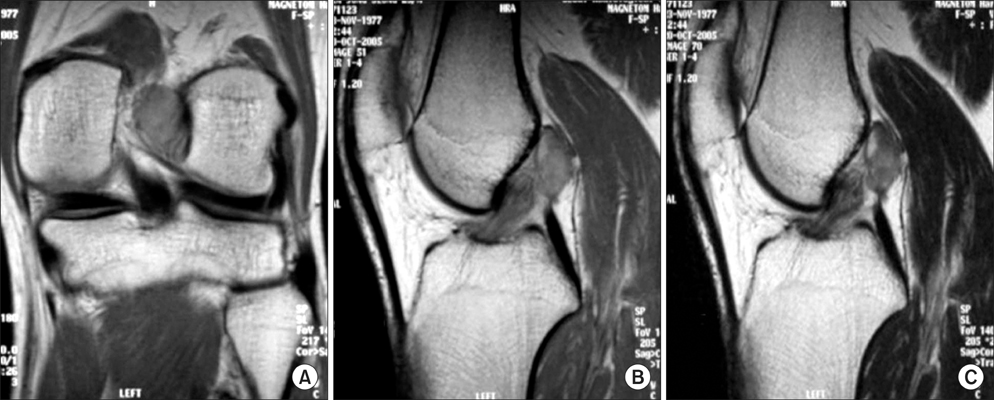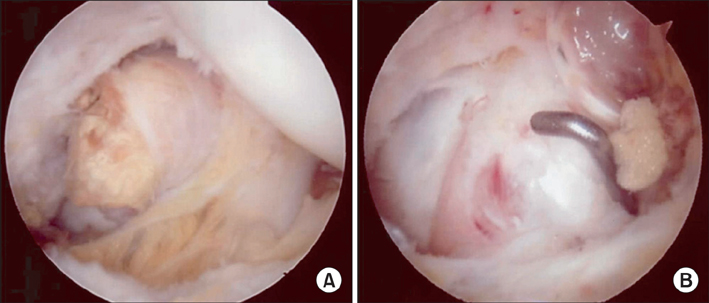Clin Orthop Surg.
2014 Jun;6(2):242-244. 10.4055/cios.2014.6.2.242.
A Tenosynovial Giant Cell Tumor Arising from Femoral Attachment of the Anterior Cruciate Ligament
- Affiliations
-
- 1Department of Orthopedic Surgery, Chonbuk National University Hospital, Jeonju, Korea. wsi1205@naver.com
- KMID: 1784674
- DOI: http://doi.org/10.4055/cios.2014.6.2.242
Abstract
- The localized type of tenosynovial giant cell tumor usually occurs on the palmar side of fingers and toes. Tenosynovial giant cell tumors of the tendon sheath are rarely intra-articular. We report a giant cell tumor of the tendon sheath arising from femoral attachment of the anterior cruciate ligament and its treatment with arthroscopy in a 28-year-old man.
MeSH Terms
Figure
Reference
-
1. Weiss SW, Goldblum JR. Enzinger and Weiss's soft tissue tumors. 4th ed. Philadelphia, PA: Mosby;2001. p. 1037–1062.2. Kuhnen C, Muller KM, Rabstein S, Kasprzynski A, Herter P. Tenosynovial giant cell tumor. Pathologe. 2005; 26(2):96–110.3. Otsuka Y, Mizuta H, Nakamura E, Kudo S, Inoue S, Takagi K. Tenosynovial giant-cell tumor arising from the anterior cruciate ligament of the knee. Arthroscopy. 1996; 12(4):496–499.4. Jones FE, Soule EH, Coventry MB. Fibrous xanthoma of synovium (giant-cell tumor of tendon sheath, pigmented nodular synovitis): a study of one hundred and eighteen cases. J Bone Joint Surg Am. 1969; 51(1):76–86.5. Miettinen MM. Diagnostic soft tissue pathology. Philadelphia, PA: Churchill Livingstone;2003. p. 489–502.6. Wood GS, Beckstead JH, Medeiros LJ, Kempson RL, Warnke RA. The cells of giant cell tumor of tendon sheath resemble osteoclasts. Am J Surg Pathol. 1988; 12(6):444–452.
- Full Text Links
- Actions
-
Cited
- CITED
-
- Close
- Share
- Similar articles
-
- A Tenosynovial Giant Cell Tumor Arising from Posterior Cruciate Ligament of Knee Joint: A Case Report
- Avulsion of the Femoral Attachment of Anterior Cruciate Ligament Associated with Ipsilateral Femoral Shaft Fracture in Skeletally Mature Patient: A Case Report
- Avulsion Fracture of Femoral Attachment of Anterior Cruciate Ligament in a 7-Year-Old Girl
- Tenosynovial Giant-cell Tumor of the Lumbar Spine
- A Clinical Study on Ligamentous Injuries of the Knee




